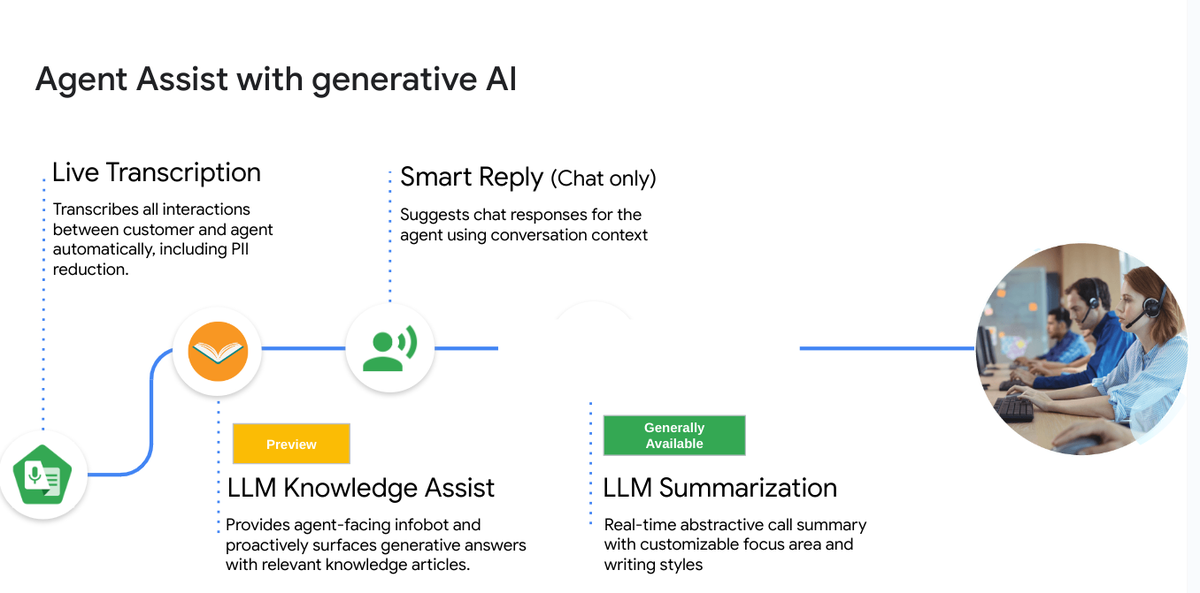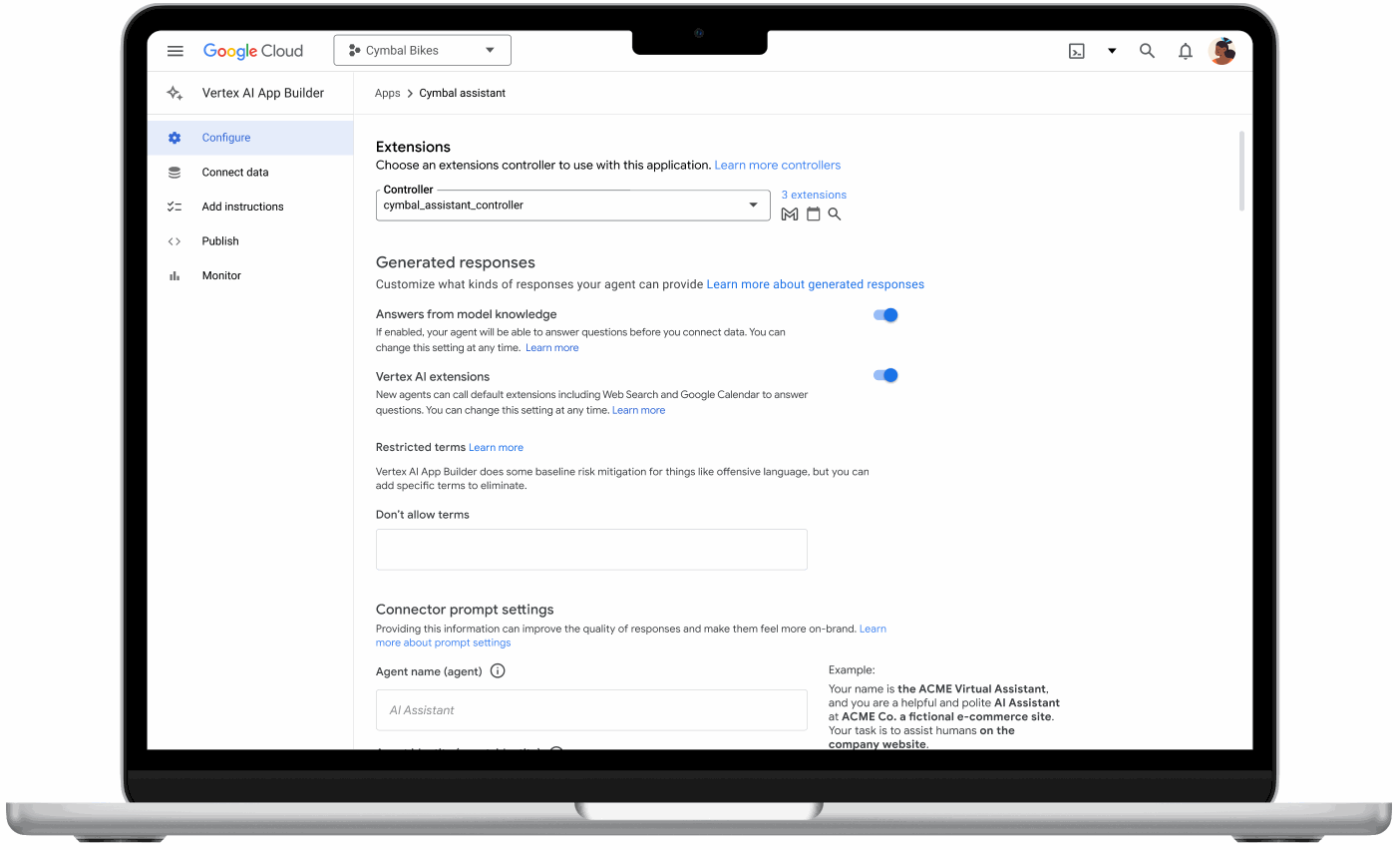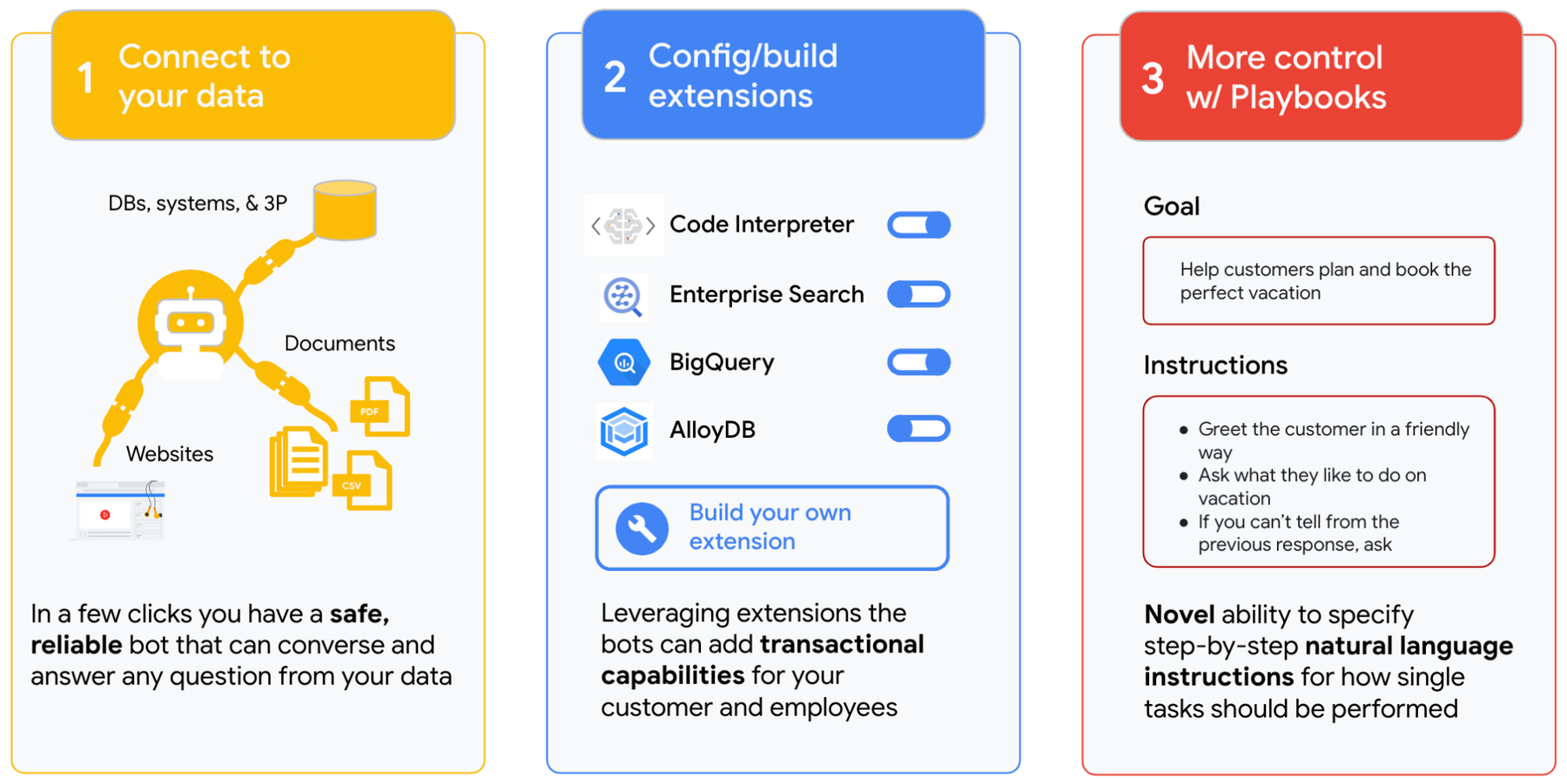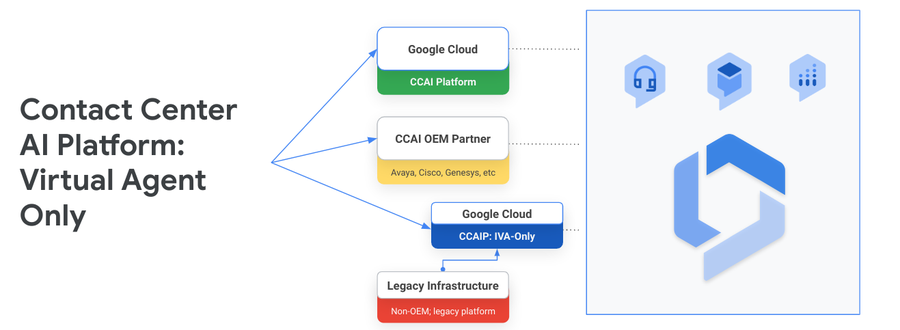How generative AI is transforming the customer service experience
Yariv Adan
Sr. Director, Product Management, Google Cloud
If you’ve had the chance to chat with Bard or another conversation AI tool in the last year, you probably, like me, walked away with a distinct impression that services like these are the future of enterprise technology. As new generative AI capabilities continue to become more readily accessible, you might now be wondering where you can apply them within your own organization. While there are a ton of use cases where gen AI can unlock value, customer service — specifically the contact center — is an excellent place to start, with low risk, and clear, measurable ROI via increased NPS/CSAT, increased agent productivity, and significant operational savings.
Almost all companies have contact centers or similar customer service channels. The leaders responsible for these operations are constantly on the hunt for ways to improve customer satisfaction, reduce cost, improve query handling times, and identify opportunities for upselling and cross-selling — often amidst tremendous challenges due to legacy infrastructure, staff turnover, and shrinking budgets. With the arrival of generative AI, though, we can see a new and powerful path to contact center modernization that is powered by AI and based in the cloud.
Earlier this year at Next ’23, we shared momentum for our conversational AI offerings and how customers like Gen Digital, Wells Fargo, ING, and Six Flags are adopting Google Cloud’sVertex AI Conversation and Contact Center AI offerings.
Real-time Agent Assist: The natural first step
Many CIOs and CX execs ask us where to start with this transformation. Google Cloud’s Agent Assist is the fastest and safest first step. Agent Assist is easy to deploy, requires almost no customization work, and operates in a Duet mode with a human agent in the middle — so it’s completely safe. It delivers measurable value across KPIs like agent handling time, CSAT (customer satisfaction score), and NPS (net promoter score). That’s why it’s such an attractive first step for gen AI and contact center transformation.
Powered by generative AI, Agent Assist makes your human agents faster, more accurate, and overall more productive throughout the agent journey:
- Live transcription, including PII reduction, allows the agent to focus on the call without worrying about transcribing or note taking.
- An internal bot in the agent’s console that listens to the conversation and presents to the agent real-time answers and suggestions, helping them learn and respond faster to questions and requests.
- Summarization provides high quality, structured, and comprehensive summaries, whenever the customer is handed off between human and virtual agents, as well as the end of the call. This saves significant agent handling time, increases CSAT in future calls, and provides data to contact center execs on compliance and business intelligence.
- Coaching delivers recommendations to live agents after they complete a call about general behavior and opportunities for upsell, cross-sell, and compliance.
We’ll be adding real-time live translation soon, so an agent and a customer can talk or chat in two different languages, through simultaneous, seamless AI-powered translation. We’ll also be offering personalized continuous monitoring and coaching for ALL agents with real time score cards and personalized coaching and training in real time and post-call.


With generative AI, you can empower human agents with in-the-moment assistance to be more productive and provide better service.
Make information seeking a breeze
Based on my conversations with customers, at least 20% to 30% of the calls (and often much higher) received in call centers are information-seeking calls, where customers ask questions that already have answers. These answers may be on the company's website, in a manual, or in FAQs. However, they can be difficult to find, and customers often don't have the time or patience to search for them. Unsurprisingly, most customers end up being routed to a human agent, even for relatively simple queries; it’s often too complex to program traditional chat or voice bots to provide the right answer or think of all potential questions someone might ask.
With Vertex AI Conversation and Dialogflow CX, we’ve simplified this process for you and built an out-of-the-box, yet customizable and secure, generative AI agent that can answer information-seeking questions for you.
Instead of hard-coding information, you only need to point the agent at the relevant information source. You can start with a domain name, a storage location, or upload documents — and we take care of the rest. Behind the scenes, we parse this information and create a gen AI agent capable of having a natural conversation about that content with customers. It’s more than “just” a large language model; it’s a robust search stack that is factual and continually refreshed, so you don’t need to worry about issues, such as hallucination or freshness, that might occur in pure LLM bots.
Using the Dialogflow Messaging Client, you can then easily integrate the agent into your website, business or messaging apps, and contact center stack. This provides a quick and easy way to divert a large number of support calls to self-service, with relatively low investment and high customer satisfaction.
Connecting to backends and completing actions
Answering questions is extremely useful and provides high ROI. However, in order to truly automate your customer experience, you want your bots to be able to complete actions on behalf of your users, such as checking the status of an order, accessing a bill, updating payment details, scheduling an appointment, and many more. Connecting to these enterprise systems is now as easy as pointing to your applications with Vertex AI Extensions and connectors.
Vertex AI data connectors help your applications maintain freshness and extend knowledge discovery with read-only access to enterprise data sources and third-party applications like Salesforce, JRA or Confluence. These connectors index your application data so you’re always surfacing the latest information to your users.
Vertex AI extensions can retrieve real-time information and take actions on the user’s behalf on Google Cloud or third-party applications via APIs. This includes tasks like booking a flight on a travel website or submitting a vacation request in your HR system. We also offer extensions for first-party applications like Gmail, Drive, BigQuery, Docs and partners like American Express, GitLab, and Workday.
Extensions and connectors are an open standard, so developers can also upload their own extensions to reuse.
Transform task handling in days
To save you time and costs, Google Cloud’s Contact Center AI already comes with a broad set of pre-built common tasks: authenticate, explain bill, check order status, make payment, and more. However, all companies also have tasks and business logic that are unique to them. We’ve made defining and adding these much easier and faster.
Programming a virtual agent or chatbot used to take a rocket scientist or two, but now, it’s as simple as writing instructions in natural language describing what you want with generative AI. With the new playbook feature in Vertex AI Conversation and Dialogflow CX, you don’t need AI experts to automate a task.
Instead, you can describe in natural language how to execute specific tasks and create a playbook agent that can automatically generate and follow a workflow for you. Convenient tools like playbook mean that building and deploying conversational AI chat or voice bots can be done in days and hours — not weeks and months.
Rather than defining processes for every specific task, you can build these generative AI bots once and deploy them across multiple channels, such as mobile apps and websites. This means that customers can get the answers they need, regardless of how they interact with your organization.
The result? Improved customer experience and more time for human agents to handle complex calls.


Vertex AI Conversation’s playbook feature (also available in Dialogflow CX) lets you use natural language to define what responses and actions you want to enable your voice and chatbots to perform, similar to how you would instruct a human agent on how to handle tasks.
Building robust virtual agents with gen AI: Putting it all together
Building robust virtual agents is now an easy to follow three steps process.


You can learn more about using gen AI virtual agents in contact centers in this free deep-dive webinar video.
Improve complex call handling across virtual and human agents
When it comes to making communication easier during complex calls, generative AI truly shines. Thanks to multi-modal foundation models, your virtual agents or chatbots can have conversations that include voice, text, images and transactions. With the call companion feature in Dialogflow CX (in preview), you can offer an interactive visual interface on a user’s phone during a voicebot call. Users can see options on their phone while an agent is talking and share input via text and images, such as names, addresses, email addresses, and more. They can also respond to visual elements, such as clickable menu options, during the conversation.
Features like Call Companion help to supplement voice interactions and make it easier and faster for customers to get answers. This can help accelerate the time it takes to resolve service and support calls, and everything can be handled by a virtual agent from start to finish. Watch this demo from our Next ’23 session to see this useful feature in action.
Generating Day 1 value for contact center teams
One of the biggest challenges we hear from customer service leaders is around limitations imposed by their current infrastructure. Last year, we launched the Contact Center AI Platform, an end-to-end cloud-native Contact Center as a Service solution. CCAI Platform is secure, scalable, and built on a foundation of the latest AI technologies, user-first design, and a focus on time to value.
With CCAI Platform, all the gen AI capabilities mentioned above are available to you from Day 1. At Next ’23, we also launched a CCAI-P “Intelligent Virtual Agent only” option, which gives you a way to access all of our gen AI services with a light touch pipeline from your existing contact center to Google Cloud. This feature allows you to work with whatever infrastructure you have, whether you are on-premises or using a CCaaS platform outside of the Google Cloud partner program.


The newly announced “IVA-only” CCAI Platform connects Dialogflow, Insights, and Summarization to your existing contact center infrastructure.
The latest developments in generative AI are pointing to a future where implementation timelines are shrinking for technology adoption, and my team and I are focused on helping customers realize Day 1 value.
Together with Google Cloud’s partners, we’ve created several value packs to help you get started wherever you are in your AI journeys. No matter your entry point, you can benefit from the latest innovations across the Vertex AI portfolio. Check out our Next ’23 sessions for Vertex AI Conversation and Contact Center AI to catch more details about all the innovation we’re bringing to you or talk to your Google Cloud sales team to learn more about how you can get value from generative AI today. Also, visit our website to stay updated on the latest conversational AI technologies from Google Cloud.



